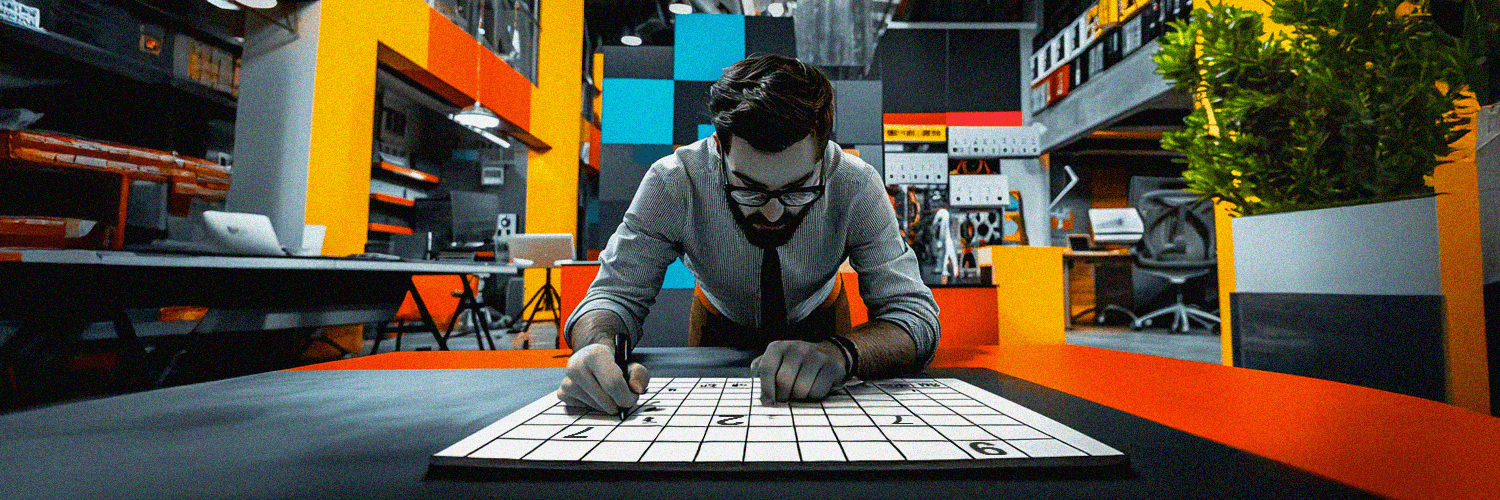If you've developed a space management strategy and implemented workplace management software only to find that your results aren't great, this article is for you! What could have caused your plan to fail? There are seven main reasons.
From manual planning to poor utilization to lack of visibility, we'll explore the bad office space management habits that can hinder the effectiveness of your space management strategy, even if you're using the best tools.
Defining Office Space Management
An organization's office space management involves not only the physical layout, but also the organizational practices that impact employee satisfaction, productivity, and morale. But let's start with defining what it is.
Office space management can be defined as the process of organizing and utilizing office space to promote efficiency and productivity in the workplace.
An effective office space management plan takes into account the specific needs of the organization and its employees and creates a layout that optimizes the use of space and resources. There are a number of factors to consider when creating an effective office space management plan.
The first task is to assess the specific needs of the company and its employees. What type of work will be done in the office? How many people will be working in the space? What kind of equipment and furniture will be needed? Once these needs are identified, you can start planning!
Another factor is the comfort and well-being of the employees. The office layout should encourage collaboration and communication, but also provide enough privacy for individual work. Temperature, lighting and acoustics should also be considered to create a comfortable working environment.
An effective office space management plan can help businesses improve their overall efficiency and productivity. By taking into account the specific needs of the business and its employees, companies can create an optimized workspace that encourages collaboration and supports individual work.

The Benefits of Efficient Office Space Management
An efficient office space management system can help to optimize the use of space within an office, resulting in a more efficient and productive work environment, and have many benefits for businesses. These include increased productivity, decreased costs, and improved employee morale.
Increased Productivity
One of the most important benefits of managing office space is increased productivity. By ensuring that workstations are used effectively, companies can make better use of available space. This can lead to increased productivity, as employees have everything they need at their fingertips. In addition, a well-managed office space can reduce distractions and create a more focused work environment.
Decreased Costs
Another benefit is decreased costs. By reducing the amount of wasted or unused space, businesses can save on rent, utilities and other overhead costs. In some cases, businesses may even be able to downsize to a smaller office if they are able to make better use of the space they have. Proper management of your office space can also help to avoid costly repairs or replacements down the road.
Improved Employee Morale
Finally, an efficiently managed office space can also improve employee morale. When employees feel that their workspace is well-organized, comfortable, and functional, they are more likely to feel positive about their job and more motivated to do their best work. This can lead to improved performance and higher employee satisfaction.
7 Common Office Space Management Mistakes
With the ever-evolving nature of the workplace, it's easy to get stuck in bad habits or settle for the status quo. This can have a negative impact on your office environment, affecting both your productivity and your bottom line, and leading to a decline in efficiency and performance.
For this reason, let's take a look at some of the most common bad office space management habits and find solutions you can implement to improve your office space. Read on to learn more about what you should avoid and how you can create a better work environment for everyone.
Manual Planning
It's important to take the time to map out your office space and determine which areas will be used for which purposes. This will help you avoid wasted space and ensure that all employees have the space they need to do their jobs. But don't leave everything to manual planning!
Manual planning refers to doing an analysis of current office space use and a detailed plan for future use, without the help of space planning tools and software. This process isn't only time-consuming, but also prone to error. Without the right tools, it's easy to make mistakes that can cost you money in the long run and lead to a lot of wasted space and resources, as well as employee frustration.
Instead of manual planning, invest in good office space planning tools. This can save you time and ensure that your office space is being used efficiently.
Inaccurate and Inconsistent Data
How much do you really know about how your office space is being used? If you're relying on inaccurate and inconsistent data to make decisions, it's time to do something about it. There are a number of ways data can be inaccurate or inconsistent, but some of the most common issues are:
- Not tracking all the right data points. Make sure you're tracking information like square footage per employee, type of space (e.g., dedicated desk vs. hot desking), and usage rates.
- Failing to account for changes in occupancy. Your office space needs may change over time as your business grows or shrinks. Make sure you have a process in place to track these changes so you can adjust your use of space accordingly.
- Incorrectly estimating future needs. It's important to have some flexibility in your office space to accommodate future growth, but don't make the mistake of overestimating those needs and end up with too much unused space.
By making sure your data is accurate and consistent, you can make better decisions about your office space.

Poor Office Space Utilization
Poor office space use can lead to a number of problems, including wasted resources, unhappy employees and decreased productivity. Below are some bad office space management habits you should leave behind:
- Not measuring or analyzing your space usage. If you don't know how your office space is being used, it's impossible to make improvements. Start measuring and analyzing your space usage so you can identify the areas that need improvement.
- Ignoring the needs of your employees. Employees are the ones who use your office space every day, so it's important to consider their needs when making decisions about the layout and design of your space. If employees are unhappy with their work environment, it'll affect their productivity and satisfaction.
- Failing to maximize storage space. Is your office cluttered and crammed? If so, it's probably because you're not using storage space efficiently. Make sure every inch of your office is being utilized by maximizing storage space through the use of shelves, cabinets and filing systems.
- Not taking advantage of natural light sources. Many offices are designed in such a way that little attention is paid to natural light. This can lead to a number of problems, from glare on computer screens to a general feeling of being trapped in a windowless room.
If you have the option to design your office space, take advantage of natural light by placing windows in strategic locations. In an existing office layout, try arranging furniture so employees have access to as much natural light as possible. - Not utilizing vertical space. When you have a lot of floor space, it can be easy to forget about the walls and ceiling. However, there is a lot of potential for storage and organization. Shelves, racks and hooks can be used to maximize the amount of things you can store without taking up too much floor space.
Empty Meeting Room or Desk Bookings
When you run an office, one of your main responsibilities is to make sure the space is used efficiently. Unfortunately, there are many bad habits that can get in the way of this, such as allowing employees to book empty meeting rooms or desks for themselves, not tracking how much space each team or department uses, and not having clear guidelines for office space usage.
Fortunately, now there is office space management software that can help you break bad habits and get the most out of your workspace. When choosing a program, consider your specific needs and goals. Do you want to create a more efficient workplace? Eliminate clutter? Save money on office supplies?
Overlooking the Growth of Your Company
Have you been guilty of overlooking the growth of your business? Perhaps you've been too busy to notice the growing piles of paperwork or the increasing number of employees. Whatever the reason, it's important to be aware of the signs that indicate your business is outgrowing its current office space:
- You're running out of storage space. If you're constantly looking for storage for documents and other materials, it's a sign that your office is too small. When there's nowhere else to turn, it's time to look for a larger space!
- You're overcrowded. Do employees have to share desks? Are people bumping into each other in the hallways? If your answer is yes, time to start thinking about a bigger office! Overcrowding can lead to decreased productivity and morale, so it's important to address the issue before it becomes a problem.
- You're spending too much on rent. If your current office space is eating up a big chunk of your budget, it may be time to look for something more affordable. There are plenty of ways to save money on office space, so don't be afraid to shop around until you find something that fits your needs.
Neglecting the Reception Area
If you've been neglecting your office's reception area, why not change that? This important space is often the first thing visitors see when they come to your business, so it's crucial that it makes a good impression. Here are some tips on how to spruce up your reception area:
- Keep it clean and free of clutter. This includes dusting surfaces, sweeping floors and emptying trash cans.
- Make sure furniture is in good condition and arranged in a way that allows for comfortable conversation.
- Decorate with items that reflect your company's brand and values.
- Place fresh flowers or plants to brighten up the space.
- Provide reading materials such as magazines or newspapers.
When you take the time to take care of your reception area, you send a message to your visitors that your company is professional and welcoming.
Lack of Visibility
When it comes to office space management, one of the worst habits you can have is a lack of visibility. This can mean a number of things, from inventory clutter to workspace clutter. One of the main reasons visibility is so important is that it allows you to make informed decisions about your space.
If you can't see what's going on, you can't know if something needs to be changed or improved. In addition, a lack of visibility can lead to problems with communication and coordination. There are a few simple ways to improve visibility in your office:
- First, make sure there is adequate lighting so everyone can see what they're doing.
- Second, keep your workspace tidy and organized so employees can easily find what they're looking for.
- Third, use technology to your advantage by using tools like interactive floor plans.

Office Space Management Software to Help You Leave Bad Habits Behind
Office space is a precious commodity, so it's not surprising that many companies now turn to various tools to help them. One such space management tool is YAROOMS, which helps teams and visitors navigate the office by providing real-time information about what's booked, what's free, and when meetings are taking place.
With YAROOMS, companies can see which meeting rooms or desks are available at any given time. This ensures that meeting rooms and desks are only used when they're needed and aren't left empty when someone could be using them. Employees spend less time searching for a meeting room or desk, which speeds up work, facilitates team collaboration, and ensures schedule integrity.
If you're looking for ways to optimize office space utilization, consider using YAROOMS. We help companies leverage space management and analytics to create a truly agile office that doesn't tie employees to their desks. Equip yourself with sharp workplace analytics and create optimized office spaces that serve your employees, not the other way round.
With YAROOMS you can book desks and also check who else will be in the office, where they'll be working, etc. Teams can easily coordinate their meetings or projects that require them to work together. This is true even for offices where the number of employees is twice the number of available workspaces.
YAROOMS can also be used as a digital reception assistant to help you provide a hassle-free check-in experience. Ease your staff's daily check-in routine with digital reception software that saves time, enables compliance with workplace policies, and positions your lobby for a great first impression!












